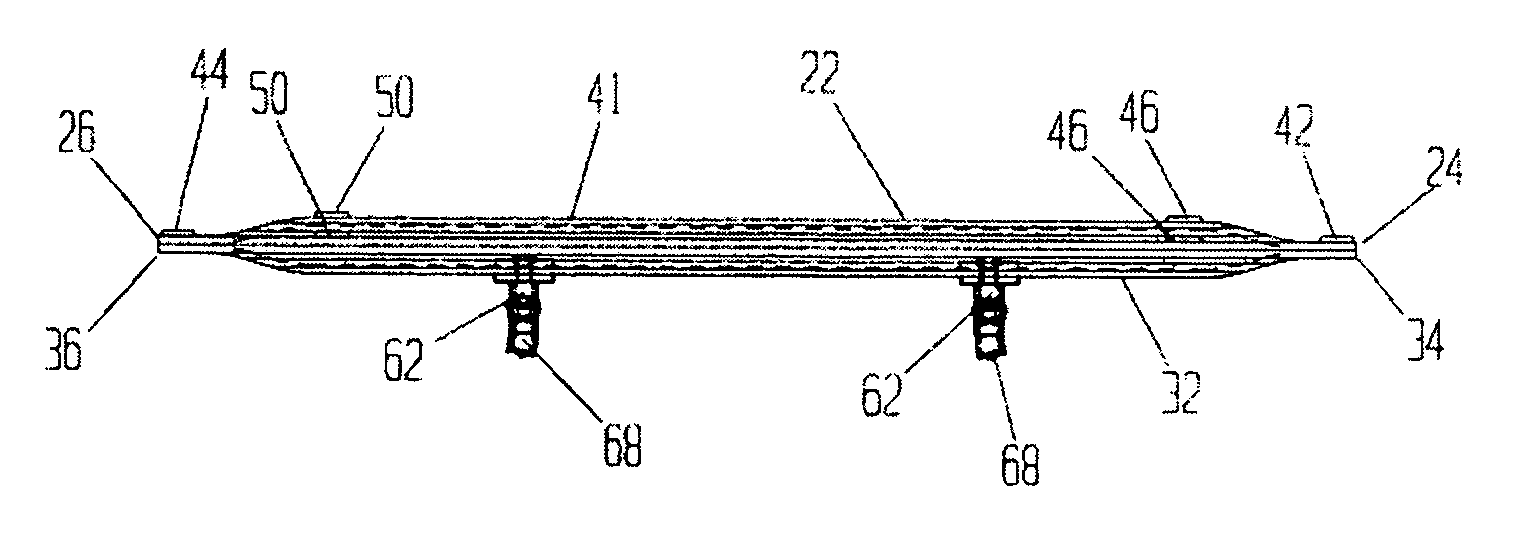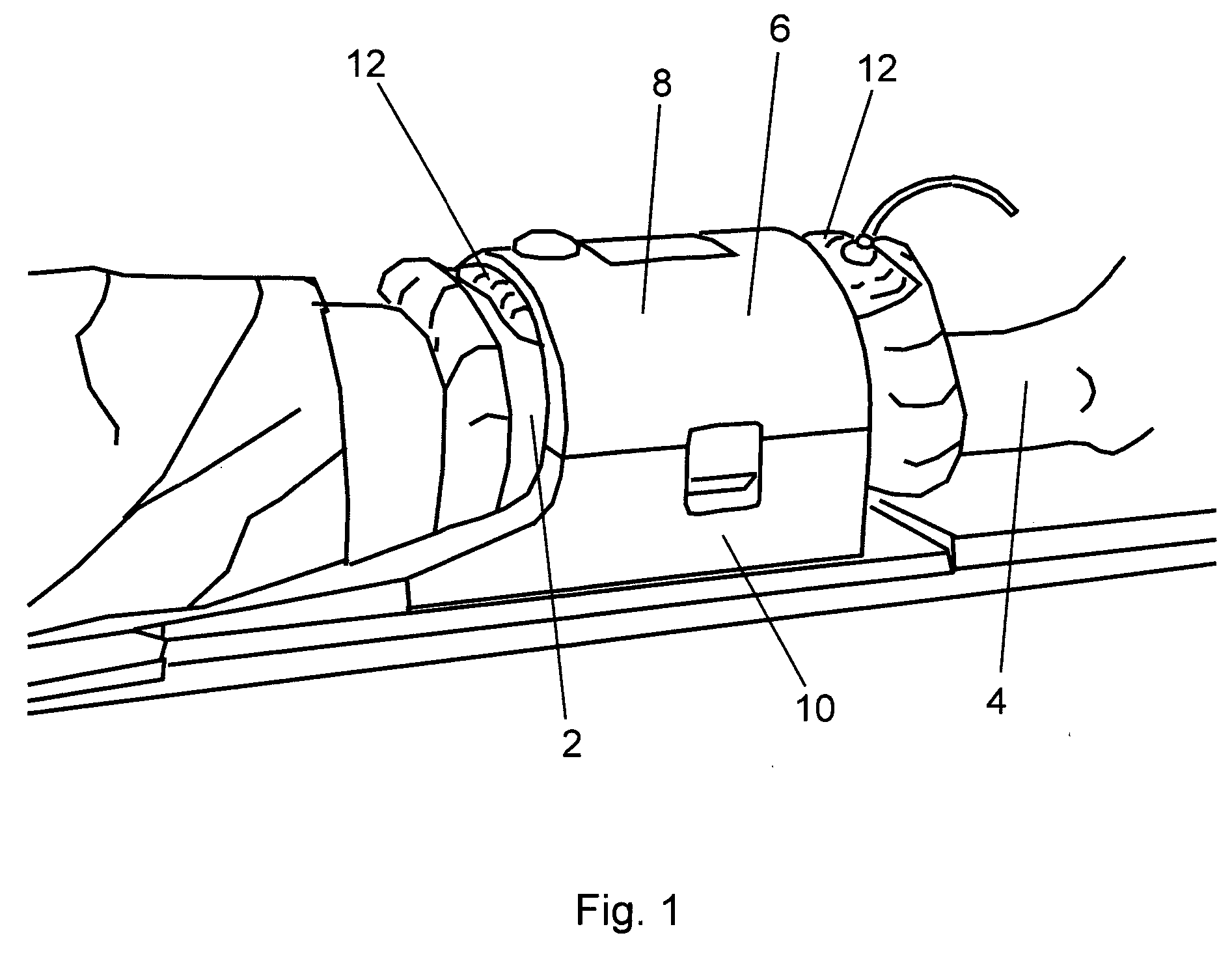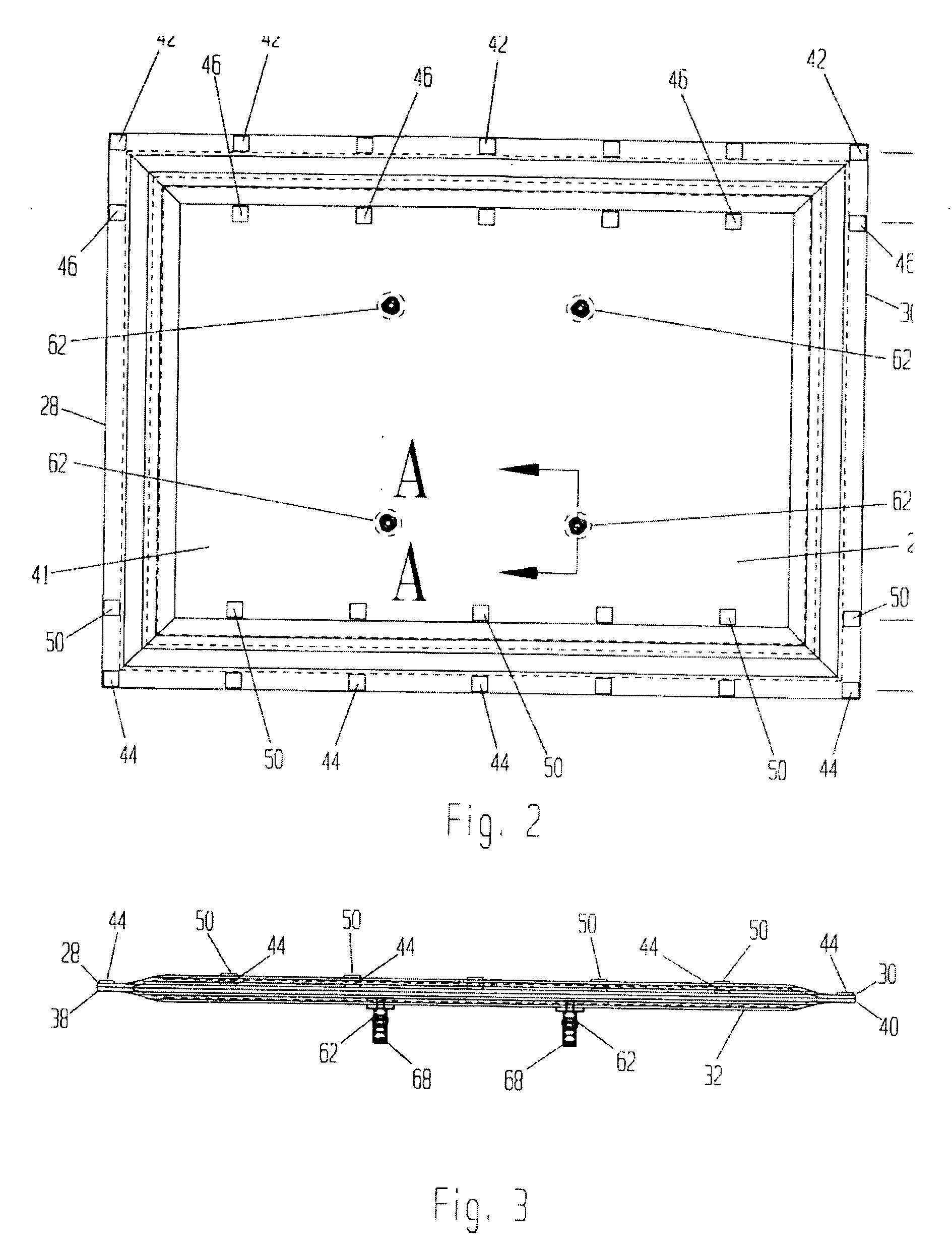Immobilizing assembly and methods for use in diagnostic and therapeutic procedures
a technology of immobilizing assembly and assembly, which is applied in the field of stabilizing, restraining, and positioning a portion of the immobilizing assembly, can solve the problems of constant motion artifacts, harming the subject, and ever-present motion problems of the radiologist, and achieve the effect of improving image quality
- Summary
- Abstract
- Description
- Claims
- Application Information
AI Technical Summary
Benefits of technology
Problems solved by technology
Method used
Image
Examples
Embodiment Construction
[0066] In the context of the present invention, the following definitions apply:
[0067] The words “a”, “an” and “the” as used herein mean “at least one” unless otherwise specifically indicated.
[0068] The term “proximal” refers to that end or portion which is situated closest to the body of the subject when the device is in use.
[0069] The term “distal” refers to that end or portion situated farthest away from the body of the subject when the device is in use.
[0070] As noted previously, the instant invention has both human medical and veterinary applications. Accordingly, the terms “subject” and “patient” are used interchangeably herein to refer to the person or animal being treated or examined. Exemplary animals include house pets, farm animals, and zoo animals. In a preferred embodiment, the subject is a mammal.
[0071] As noted previously, the instant invention has both diagnostic and therapeutic utility. Accordingly, although the detailed description below often makes specific r...
PUM
 Login to View More
Login to View More Abstract
Description
Claims
Application Information
 Login to View More
Login to View More - R&D
- Intellectual Property
- Life Sciences
- Materials
- Tech Scout
- Unparalleled Data Quality
- Higher Quality Content
- 60% Fewer Hallucinations
Browse by: Latest US Patents, China's latest patents, Technical Efficacy Thesaurus, Application Domain, Technology Topic, Popular Technical Reports.
© 2025 PatSnap. All rights reserved.Legal|Privacy policy|Modern Slavery Act Transparency Statement|Sitemap|About US| Contact US: help@patsnap.com



